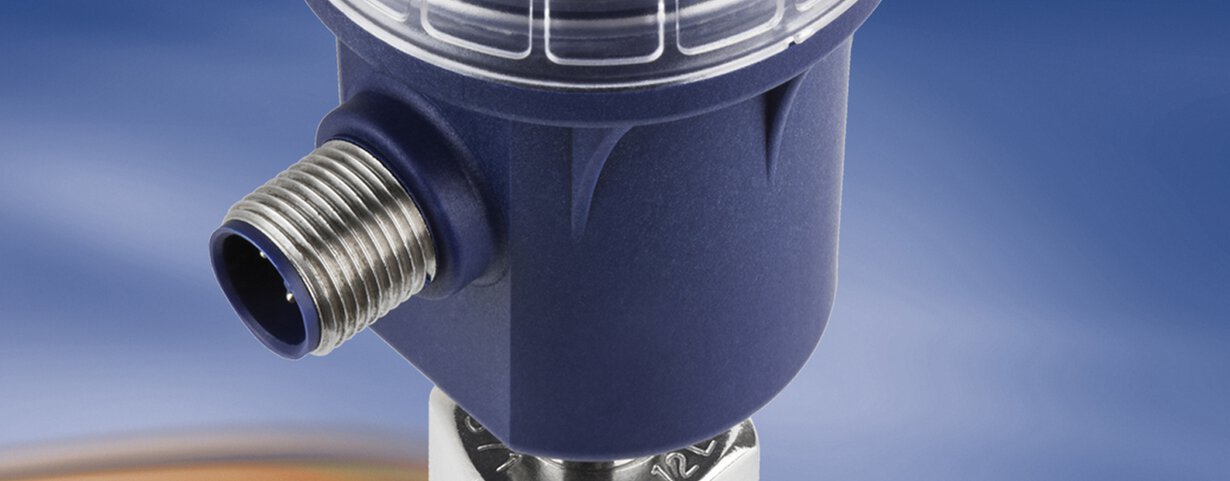

Fast, Cost-Effective, User-Friendly
Flow sensors are required in a range of sectors and applications. With the PINOS L01, JUMO presents an electronic variant intended for use in water and watery mediums. It can be used, for example, to check cooling circuits, compressors, pumps, and heat exchangers. However, the new device can also be used to monitor leaks, to protect pumps against dry running, and in lubricant circuits.
The JUMO PINOS L01 is characterized by its simple installation that does not depend on direction, and easy operation. Configuration occurs over an USB interface with a user-friendly setup program that is used in many other JUMO devices. Customized setup ex works is also possible.
A measured value is issued via an analog output (0(4) to 20 mA).
The PINOS L01 can be used for a nominal pressure of up to 25 bar and in a
permissible flow range of 10 to 150 cm/s.
The process connection is established using suitable stainless
steel fittings. Other materials may be used as well. The PINOS L01 is
also available with a switching output for which the switching point can
be set on-site. A so-called window opening/closing function is included
so that the switching points can be determined for a specific measuring
range.
With its robust design that complies with protection type IP
65/67, the flow sensor can also be used in harsh environmental
conditions. Reliable operation is guaranteed in ambient temperatures
from -25 to +70 °C. Measurement medium temperature can range between -25
and +80 °C.
The new flow sensor works according to the calorimetric
measurement principle. Here, the measurement is taken using temperature
sensors that do not have moving parts. The sensor is submerged in the
flowing medium which washes around it. A heating element and a
temperature sensor make up the sensor – on the one hand, the heating
element is continuously supplied with a small amount of electrical
energy while at the same time this temperature increase in the sensor is
discharged through the flowing liquid. The temperature conditions that
arise are measured by the temperature sensor. In simple terms, the
faster the liquid flows, the greater the heating element is cooled.
Consequently, the flow speed of the liquid can be determined using a
simple temperature measurement.
Downloads
Do you still have questions?
